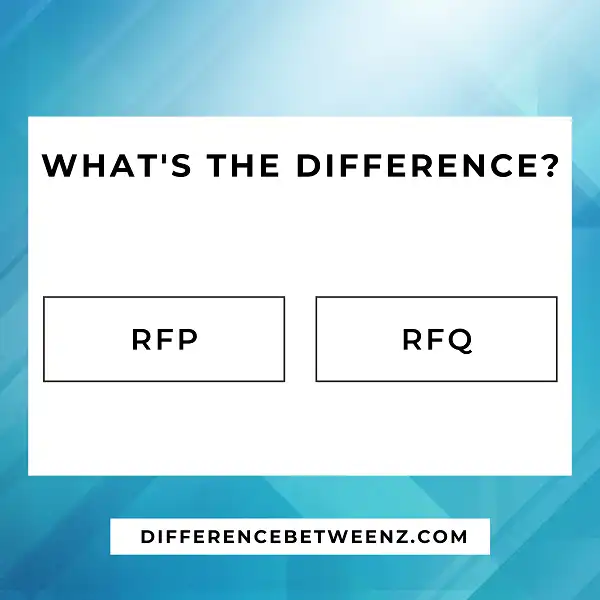Requests for proposal (RFP) and requests for quotation (RFQ) are both common methods of procuring goods and services, but there are subtle differences between the two. An RFP is typically used when a government or business is looking to procure something complex, such as a new system or large contract. An RFQ is generally used for simpler purchases, such as office supplies. In an RFP, potential vendors are asked to submit proposals that include specific information about their product or service. An RFQ usually asks vendors to provide a price quote for the good or service being procured.
What is RFP?
RFP stands for Request For Proposal. It is a document that businesses and organizations use to solicit proposals from potential vendors. The RFP outlines the specific needs of the organization and provides instructions for how to submit a proposal. RFPs are often used for complex projects or when the organization is seeking a wide range of services. Vendors who wish to submit a proposal must carefully review the RFP and ensure that they can meet all of the requirements. RFPs can be an effective way to find the right vendor for a project, but they can also be time-consuming and expensive. As a result, organizations should only issue RFPs when they are confident that it is the best procurement method for their needs.
What is RFQ?
RFQ stands for Request for Quotation. It is a document that a company sends to potential suppliers in order to request pricing information. The RFQ will typically include a description of the products or services that the company is interested in, as well as any specifications or other requirements. The intent of an RFQ is to obtain competitive bids from suppliers so that the company can choose the most advantageous option. RFQs are commonly used in procurement processes, particularly when the products or services being purchased are complex or technical in nature. By issuing an RFQ, companies can ensure that they are getting the best possible value for their purchase.
Difference between RFP and RFQ
RFPs and RFQs are both types of documents that businesses use in the procurement process. RFP stands for Request for Proposal, while RFQ stands for Request for Quotation. The main difference between RFP and RFQ is that RFPs are used when the buyer is looking for a specific solution, while RFQs are used when the buyer is looking for a quote on a specific product or service. RFPs are usually more detailed than RFQs, and they often involve a formal bidding process. RFQs, on the other hand, are typically used for more straightforward purchases. When evaluating RFPs and RFQs, businesses should consider their specific needs and objectives. Depending on the situation, either an RFP or an RFQ may be the better option.
Conclusion
The key difference between an RFP and RFQ is that an RFP is solicited from a supplier, while an RFQ is sent out to potential suppliers. An RFP typically contains more information because the buyer has already determined their needs and are looking for a supplier who can meet those specific needs. An RFQ, on the other hand, asks suppliers to submit a proposal outlining how they could meet the buyer’s needs. This gives the buyers more options and allows them to compare proposals side-by-side. So which one should you use? That depends on your business and what you’re trying to accomplish. If you have a clear idea of what you need, then go with an RFP. If you want to get input from multiple suppliers before making a decision, send out an RFQ instead.


